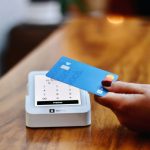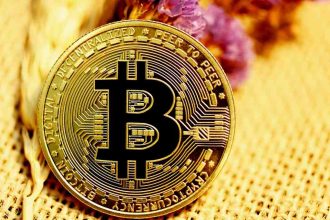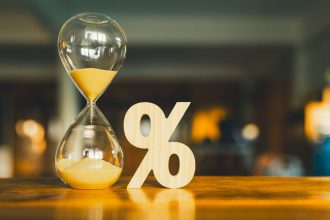Buy Now, Pay Later has quickly become one of the most visible shifts in personal finance. Once a niche option tucked into a few online checkouts, it is now everywhere. From clothing retailers to electronics stores, the option to split payments into smaller installments appears as casually as a credit card logo. It is marketed as freedom, as a way to spread out costs without interest, and for many people it feels like a clever trick. The first payment looks small, the rest are delayed, and the purchase becomes easier to justify.
Yet beneath the convenience, Buy Now, Pay Later hides risks that most shoppers overlook. It lowers the barrier to spending and makes debt invisible until it piles up. People who would never take out a personal loan or swipe a maxed credit card often breeze into a Buy Now, Pay Later plan because it does not feel like borrowing. What they forget is that it is still a loan, one that can carry penalties, late fees, and long-term consequences.
The rise of this model speaks to how modern finance is changing. Shoppers want speed and flexibility. Retailers want higher sales. Lenders want new customers. Buy Now, Pay Later ties all three together. When used carefully, it can be a tool. When used carelessly, it becomes a trap.
The system itself is simple. A provider pays the merchant upfront. You, the shopper, agree to pay the provider back in installments. Most plans divide the cost into four payments over six weeks, though some stretch longer. If you pay on time, you may avoid interest entirely. That is the hook. But the fine print always matters. Miss one payment and you may face late fees, tighter repayment schedules, or even a report to a credit bureau.
The danger comes less from the terms and more from the psychology. The first payment feels so small that people begin stacking purchases. A sweater here, headphones there, an appliance a week later. Each one carries its own schedule of payments. Soon, what felt like manageable slices overlap into a confusing web of obligations. The borrower forgets the totals because they are scattered across different providers. Then the due dates converge, and stress begins.
There are stories of people who use four or five different Buy Now, Pay Later services at the same time. Each one promised affordability, yet together they became overwhelming. Late fees piled up, not because the person lacked income, but because the timing of multiple payments became impossible to juggle. This is where the system reveals its hidden cost.
None of this means the model is always harmful. Used with discipline, Buy Now, Pay Later can actually help with cash flow. If you are making a purchase you had already planned, and you want to spread the cost across two pay periods, it can be convenient. A new phone for work or an appliance for the home might feel less painful when paid in installments. In that sense, it is not unlike a credit card. The problem begins when people treat it as free money rather than a structured loan.
The key is to approach it with intention. Ask yourself if you would still buy the item if no installment option existed. If the answer is no, then the plan is not helping you, it is tempting you. Responsible use means limiting the number of active plans, keeping them organized like any other bill, and paying ahead when possible. If you have the money before the next installment date, clear it early. That way you avoid surprises.
Imagine two people using Buy Now, Pay Later. Sarah uses it to purchase a laptop for work. She has the cash but prefers to keep some liquidity in her account until payday. She pays off each installment on schedule and even makes an early payment. For her, the system is a helpful tool. Jason, on the other hand, uses it for multiple clothing purchases and a few gadgets he did not plan to buy. He forgets that three different plans are due in the same week. He misses one payment, pays a late fee, then scrambles to catch up on the others. What looked like convenience becomes stress. The difference is not the system itself but the way it is used.
There is also a bigger picture. Credit scores and borrowing history matter more than ever. While some Buy Now, Pay Later providers do not report activity to credit bureaus, many are beginning to. This means that missed payments could show up on your record and affect your ability to qualify for loans in the future. Using the system too heavily may also raise red flags for lenders who prefer steady, predictable borrowing behavior. If your goal is to one day buy a house or finance a car, you must protect your financial profile now.
Buy Now, Pay Later is also part of a wider shift toward embedded finance. Money is being built directly into shopping, apps, and everyday tools. The more seamless it becomes, the easier it is to spend without thinking. Technology removes friction, but friction was often the pause that saved people from overspending. Now the pause is gone, and the responsibility rests entirely on the individual.
Some communities are fighting back with trends like loud budgeting, where people openly share their spending limits to keep themselves accountable. Others use no-spend challenges to test their discipline. These movements reveal something important. It is not enough for finance to be easy. It must also be conscious. Buy Now, Pay Later will not disappear. If anything, it will grow. But consumers must adapt by strengthening habits and boundaries.
So how can you use it wisely? Treat it as a loan, not a perk. Only use it for purchases you would make regardless. Keep a calendar of due dates alongside your regular bills. Avoid juggling too many plans at once. If you receive a windfall, pay off the balance early. And most importantly, resist using it for impulse buys. If you would not swipe a credit card for the purchase, do not use Buy Now, Pay Later either.
Ultimately, this system reflects a timeless truth about money. Tools can either help or harm, depending on how they are handled. A hammer can build a house or break a window. Buy Now, Pay Later can smooth your finances or destabilize them. The choice lies in the discipline of the user.
Financial strength is not about avoiding every new tool that comes along. It is about understanding them, mastering them, and refusing to let them control you. When you use Buy Now, Pay Later thoughtfully, it can be part of your plan. When you use it carelessly, it becomes part of your problem.
The real danger is not in the model itself but in the illusion it creates. The illusion of affordability. The illusion of freedom. The illusion that tomorrow’s payments will somehow be easier than today’s. Break the illusion, and you will see it for what it is: another form of borrowing. And borrowing must always be approached with respect.
Buy Now, Pay Later is here to stay. The question is whether you will use it as a stepping stone or stumble over it as a trap. If you treat it like a loan, budget for it, and limit it to needs instead of wants, it can serve you well. If you chase every easy installment plan that pops up on your screen, it will eventually catch up with you.
Financial peace does not come from the payment option you choose at checkout. It comes from clarity, discipline, and the confidence that you are in charge of your money. Buy Now, Pay Later will not change that. Only you can.
Featured Image Source: V@E Photography / Unsplash









